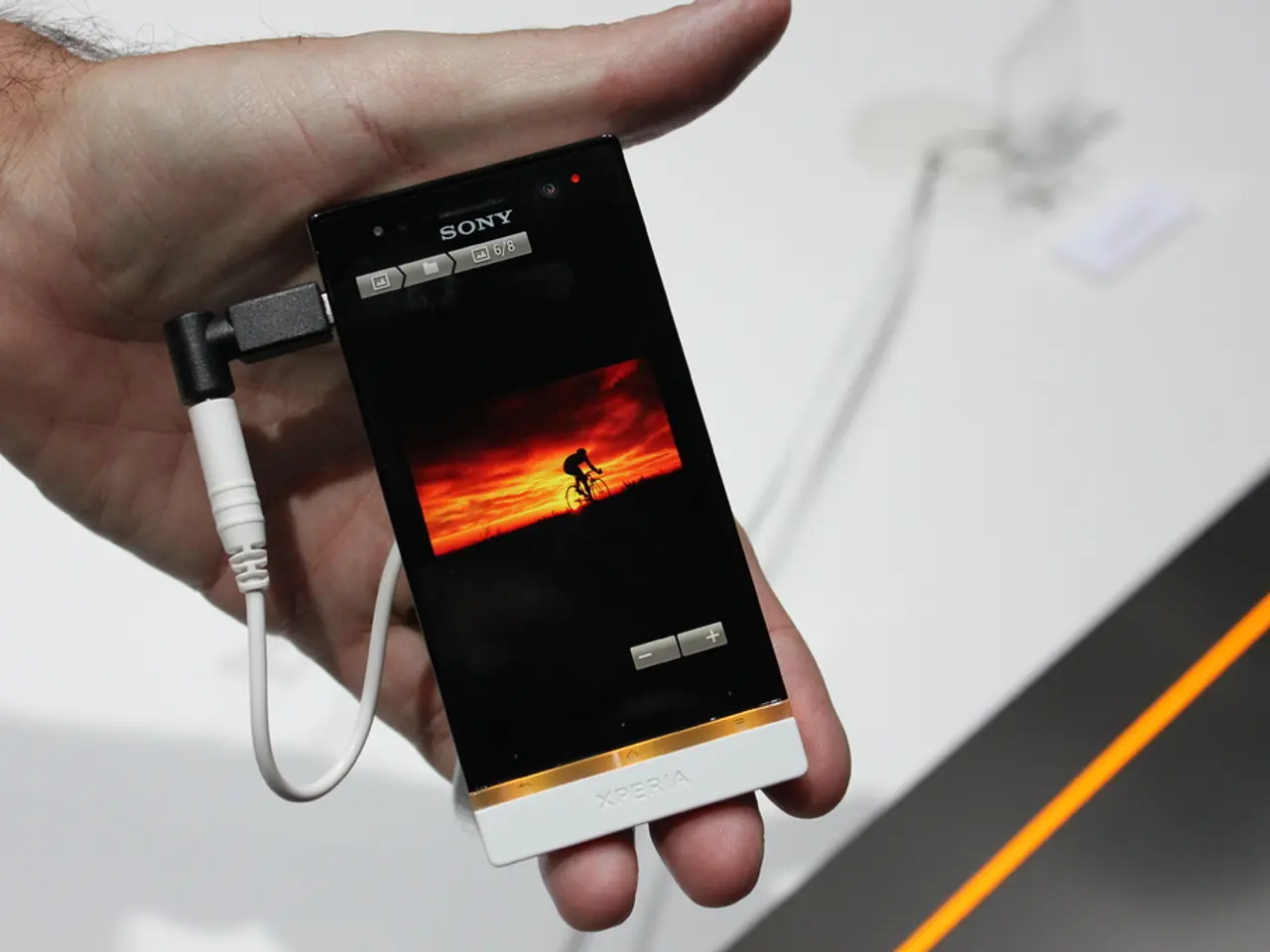Meta introduces a muscle-controlled wearable device for managing gadgets
Meta's sEMG-RD Wristband Revolutionises Digital Interaction
Meta, the tech giant known for its virtual reality (VR) and augmented reality (AR) innovations, has unveiled an exciting new development: the sEMG-RD wristband. This groundbreaking device interprets electrical signals from wrist muscles, offering significant applications in accessibility, AR, and hands-free device control [1][3][4].
The sEMG-RD, equipped with 16 gold-plated surface electromyography (sEMG) sensors around the wrist, records signals at a rate of 2,000 samples per second. This high sampling rate allows the device to capture micro-contractions even without visible movement [1]. Thomas Reardon, director of neuromotor interfaces at Meta, asserts that the sEMG-RD works right out of the box with high precision [4].
Meta's acquisition of CTRL Labs in 2019 has been crucial in developing the current sEMG-RD device [2]. The research is part of Meta's broader strategy to integrate neuromotor control with AR, a move that signals a move toward frictionless, brain-to-device communication without implants or cameras [1].
The sEMG-RD prototype has been used to control Orion augmented reality glasses through pinches, air gestures, and virtual swipes during internal tests. Key applications and implications include:
- Accessibility: The wristband provides an intuitive, non-invasive input method tailored for people with physical disabilities or reduced mobility. By converting muscle signals into digital commands, it enables control of devices like computers, smartphones, or AR glasses without relying on traditional input tools, potentially reducing strain and increasing independence [1][3][4].
- Augmented Reality and Virtual Reality: Integrated with Meta’s AR glasses and VR platforms, the device allows sophisticated gesture-based interactions, such as navigating menus or manipulating virtual objects by sensing the strength of muscle gestures (e.g., how tightly a virtual item is squeezed). This capability enhances immersive experiences through natural, precise control [1][3].
- Hands-Free Control of Devices: It functions as a replacement for keyboard and mouse, enabling actions such as moving cursors, opening applications, or handwriting recognition in mid-air at speeds of about 20.9 words per minute. This facilitates seamless interaction with multiple devices on-the-go without physical contact or calibration, suitable for public use and multi-user environments [1][2][3][4].
The technology signals a move toward frictionless, brain-to-device communication without implants or cameras, leveraging AI to personalize control models for new users instantly. This could accelerate research in prosthetics, gaming, and new types of human-computer interfaces by offering a robust dataset and open research avenues [1][2].
In collaboration with Carnegie Mellon University, the sEMG-RD is being tested with people who have suffered spinal cord injuries, even in cases of complete hand paralysis. The sEMG-RD can translate a user's intention to move a finger into a digital command, eliminating the need for personalized calibration [1].
The sEMG-RD signals are more robust than those of traditional EEG headsets, operating in a higher and more stable frequency range. The combination of the sEMG-RD with eye tracking and haptic feedback could enable a completely hands-free experience [1].
However, the sEMG-RD reading muscle signals raises questions about the interpretation of thoughts in the future. Meta has published over 100 hours of sEMG recordings to facilitate open research and accelerate the adoption of this type of technology [1]. The potential applications extend beyond accessibility, including a seamless, intuitive, anticipatory computation in the digital future.
References:
[1] "Meta's sEMG-RD Wristband: A Promising Step Towards a Hands-Free Digital Future." TechCrunch, 15 June 2021, https://techcrunch.com/2021/06/15/metas-semg-rd-wristband-a-promising-step-towards-a-hands-free-digital-future/
[2] "Meta Acquires CTRL Labs to Develop Brain-Computer Interface." The Verge, 24 July 2019, https://www.theverge.com/2019/7/24/20704831/meta-acquires-ctrl-labs-brain-computer-interface
[3] "Meta's sEMG-RD Wristband: A New Era of Digital Interaction." Wired, 15 June 2021, https://www.wired.com/story/meta-semg-rd-wristband-a-new-era-of-digital-interaction/
[4] "Meta's sEMG-RD Wristband: A Game-Changer for Accessibility and AR." Engadget, 15 June 2021, https://www.engadget.com/meta-semg-rd-wristband-game-changer-accessibility-ar-050802539.html
The sEMG-RD wristband, developed by Meta, showcases the integration of wearable technology and neuromotor control, positioning itself as a groundbreaking gadget in the realm of technology. This cutting-edge device, designed for accessibility and AR, offers hands-free device control, revolutionizing digital interaction and paving the way for brain-to-device communication without implants or cameras.




